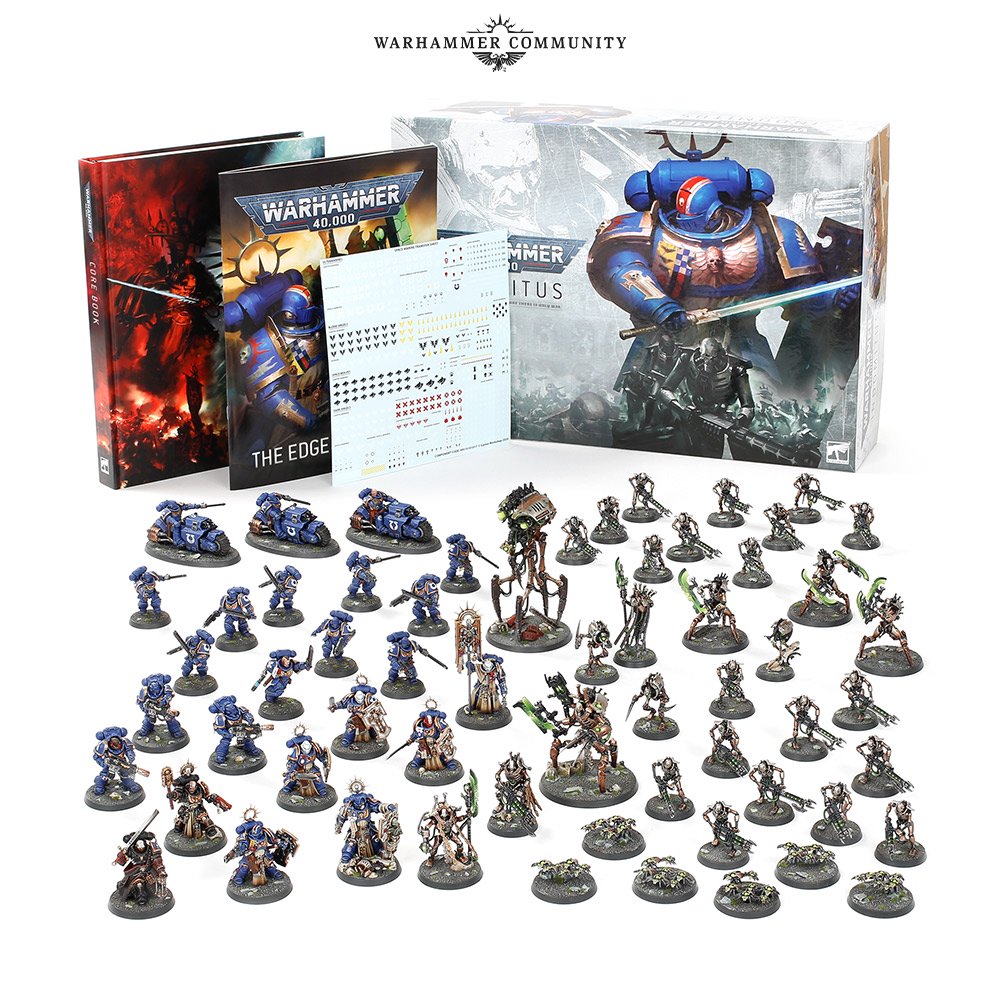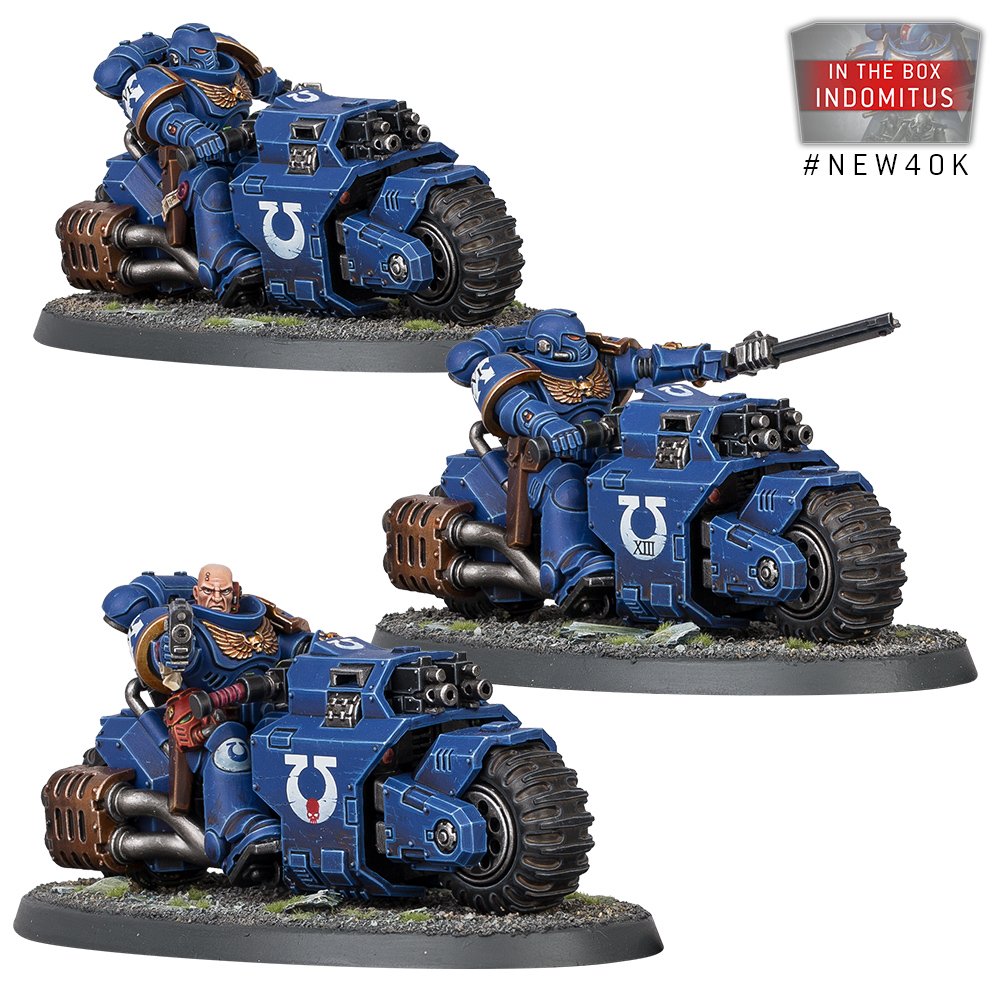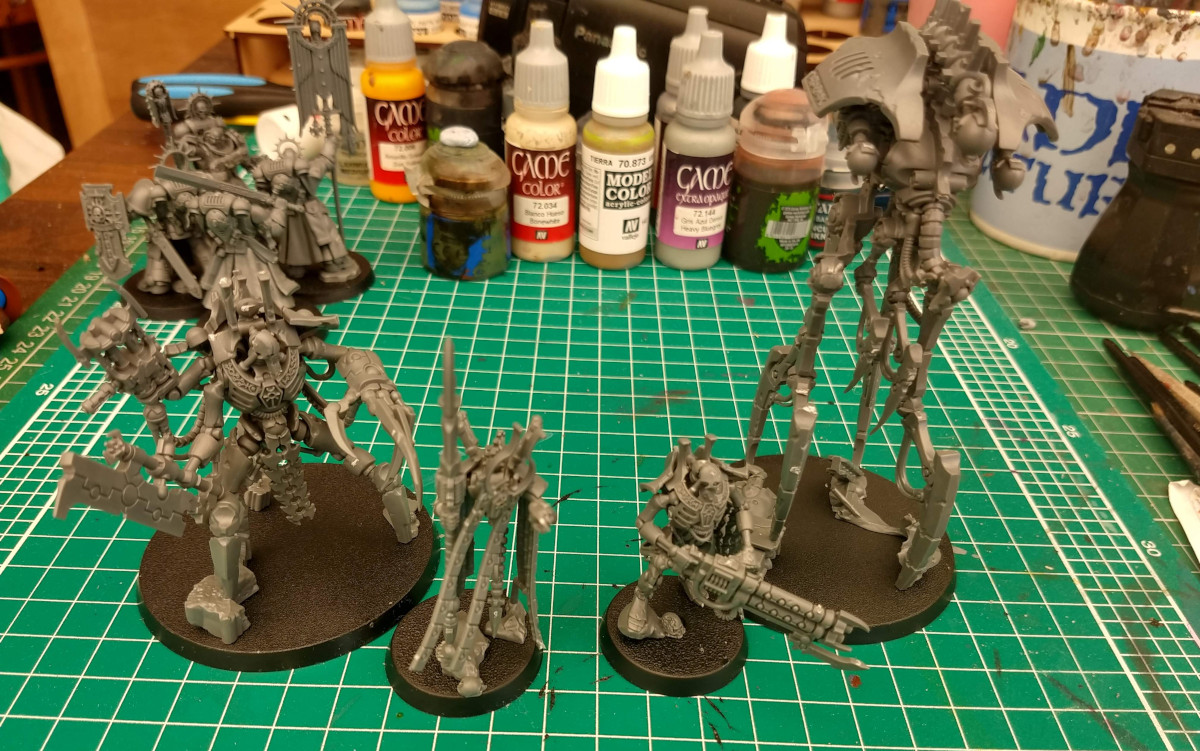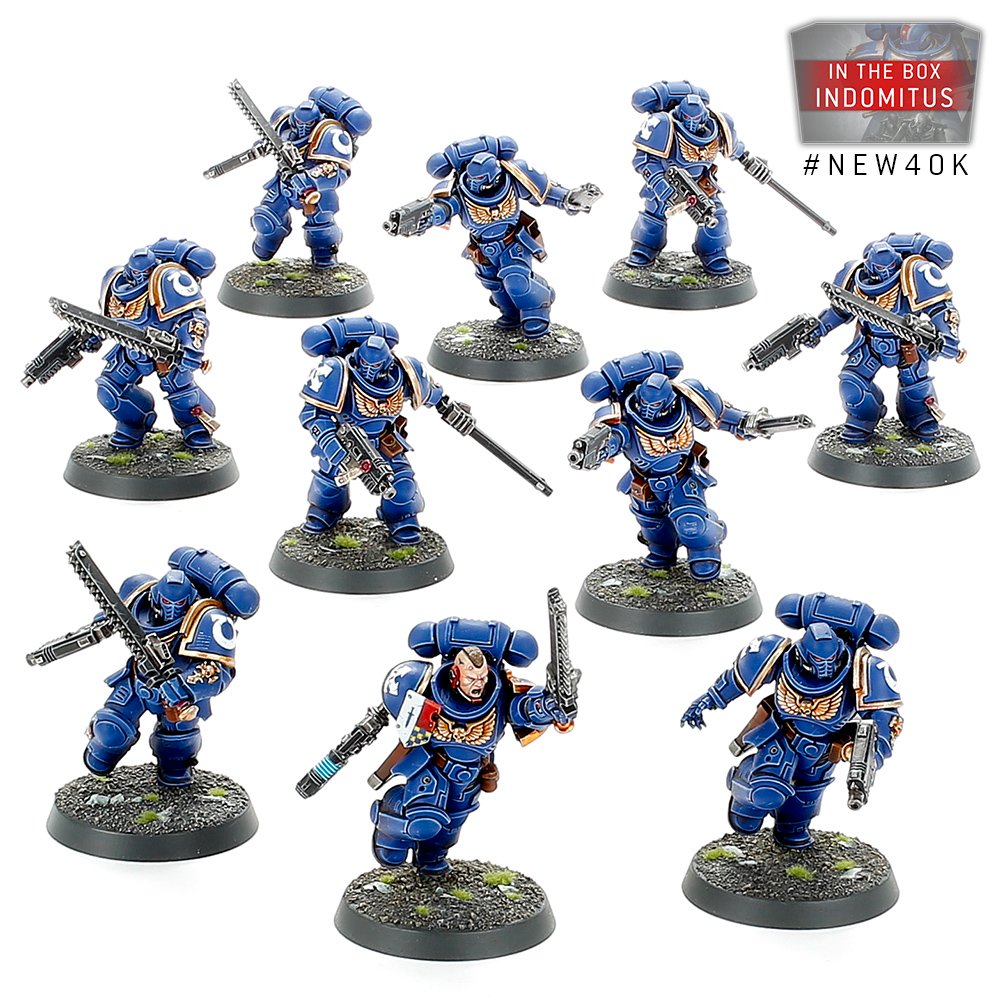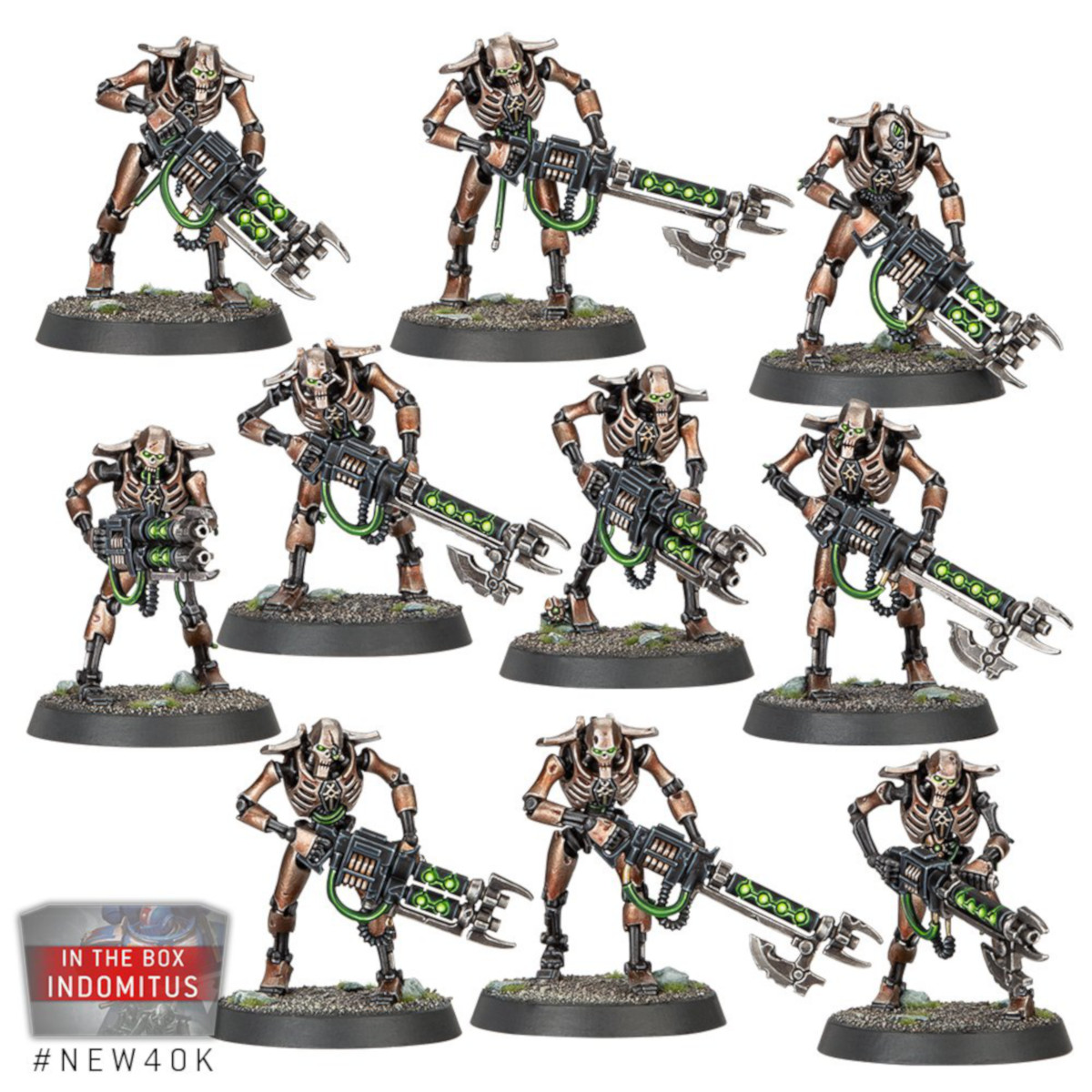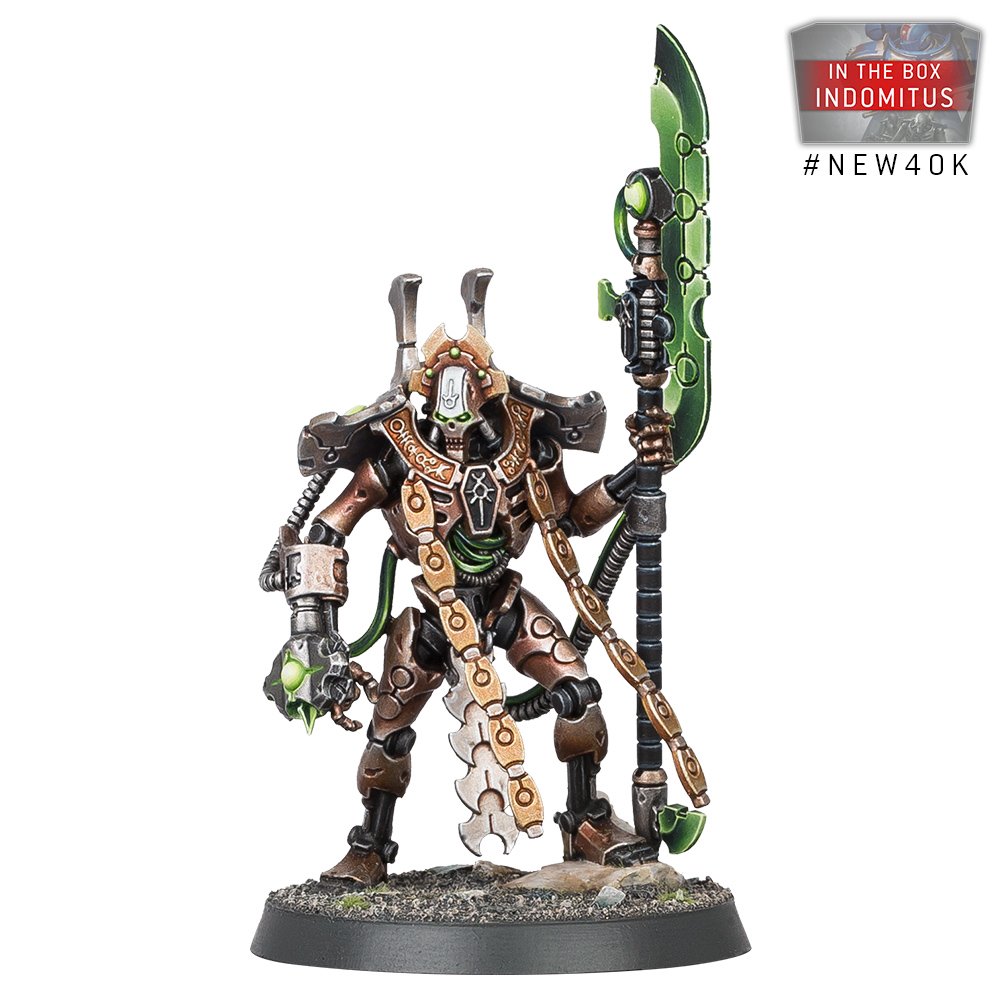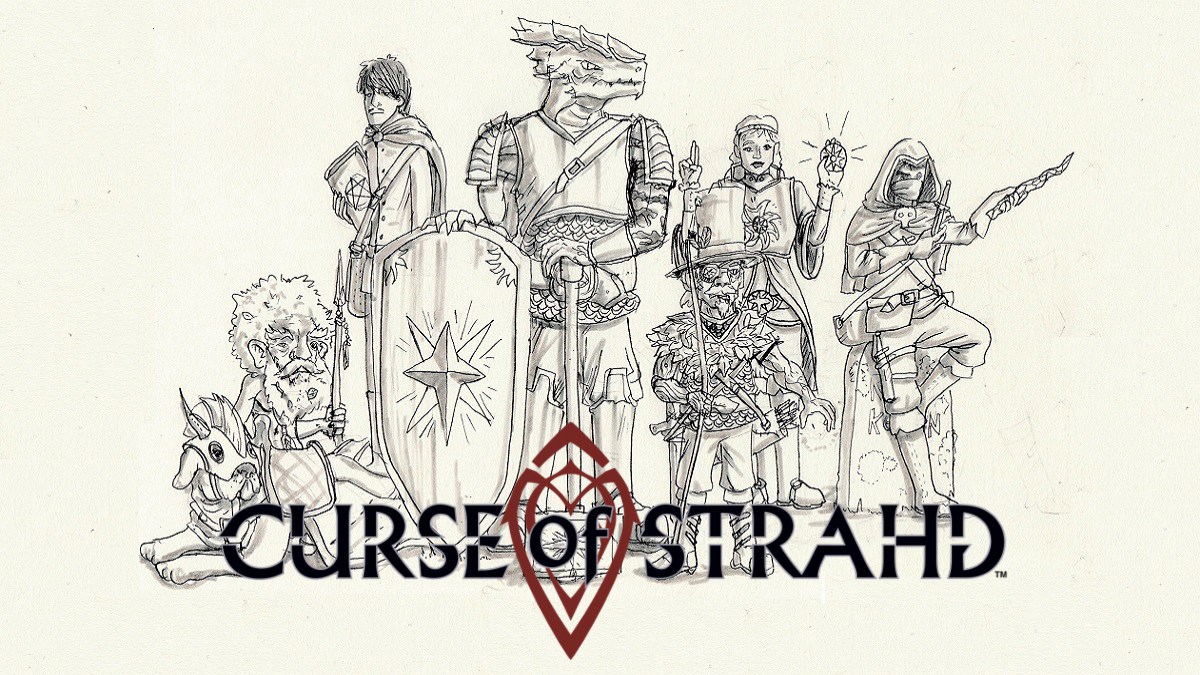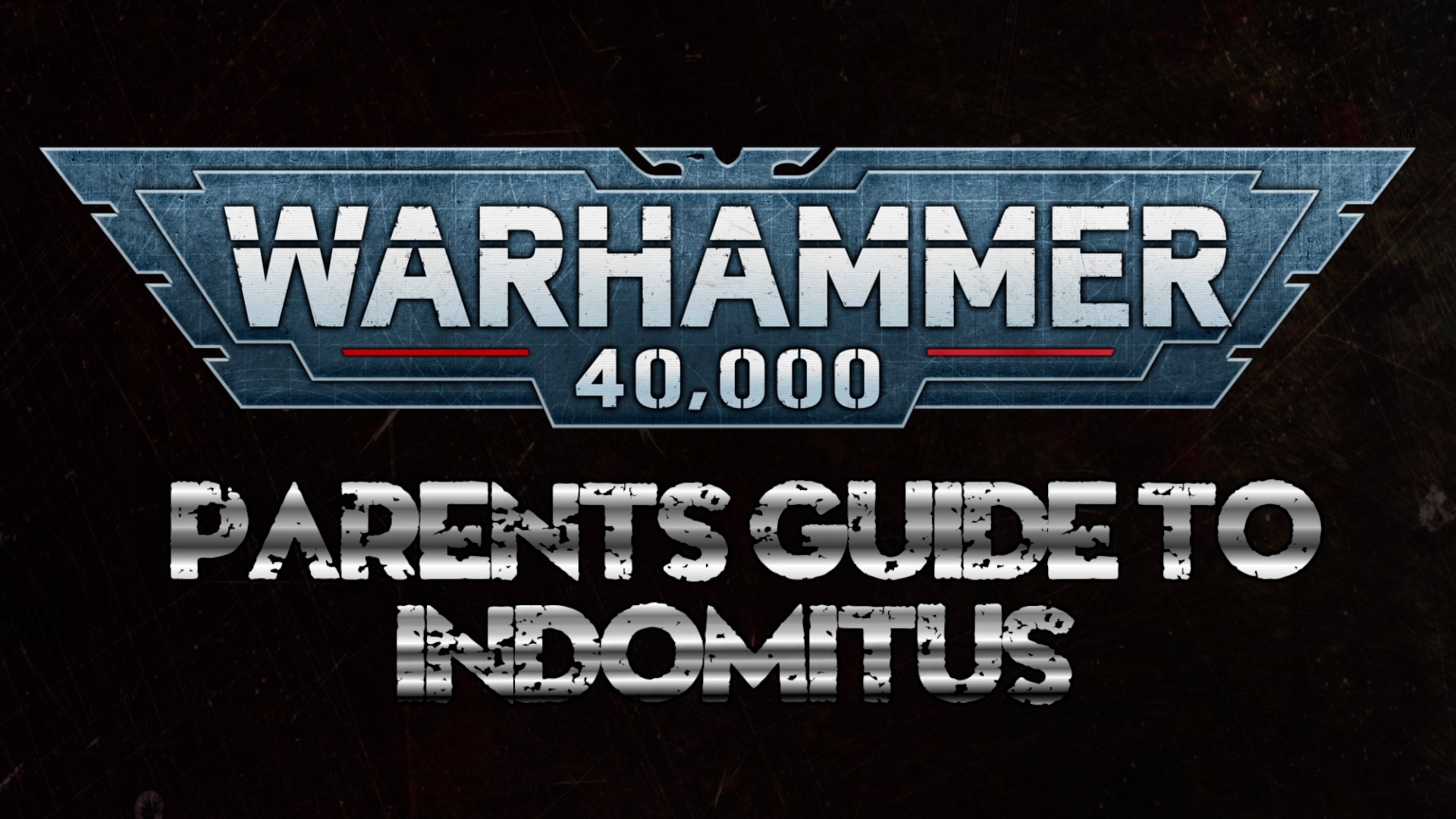 Warhammer 40,000: Indomitus is here. Well almost – It’s available to pre-order from July 11th and goes on sale July 25th. Its release is hugely anticipated, and it looks set to showcase the absolute best of Games Workshop’s miniatures design and production values. Games Workshop has been kind enough to send GeekDad a copy so we can take a look inside the box ahead of pre-orders being available.
Warhammer 40,000: Indomitus is here. Well almost – It’s available to pre-order from July 11th and goes on sale July 25th. Its release is hugely anticipated, and it looks set to showcase the absolute best of Games Workshop’s miniatures design and production values. Games Workshop has been kind enough to send GeekDad a copy so we can take a look inside the box ahead of pre-orders being available.
As I stated in my recent Parents’ Guide to Warhammer 40,000, I can’t hope to compete with the official Warhammer Community page or many of the other dedicated 40K content providers. I don’t have the depth of knowledge (or, if I’m honest, the time) to go into that much detail. Instead, my offering is once again for parents who are experiencing the hobby for the first time, most likely because their children have come home talking about it. Do check out my intro article first, but then come back to find out, what’s in the latest “Big Box” for Warhammer 40,000.
I guess the first thing to mention if you’re looking at it from a parent’s perspective is that the Age rating of this game is 12+. Age ratings on games are a little hard to pin down but any younger than 12 and your child is probably going to need some hand-holding to play games, at least initially. How well they manage with the building and painting of the miniatures is very much going to depend on your child. Again, they may need some help to get started. I’ll be writing a separate piece about building and painting in the coming weeks.
Do You Need Warhammer 40,000: Indomitus?
Before getting into the detail of my review here is a quick list of pros and cons for new players and their parents to consider.
Pros:
- It looks amazing.
- It includes some of the finest miniatures Games Workshop has created.
- It represents excellent value for money. The rumored list price is £125 ($200). Not cheap but it’s a great price for what is a premium product.
- The models don’t require glue to assemble.
- There are rules for running very small battles. Perfect for beginners.
- Rules are well laid out.
- New Crusade system is great for new players – allows them to build a story and gradually add to their miniature collection. This is an exciting way to play the game and might justify buying the entire box on its own.
- The background of the setting is fully explained in rich and beautiful detail.
Cons:
- The rules are encased in 380 pages of book which might be daunting for new players. You can print that section, here though.
- No “Quick Start” rules. This is not a Starter Set. It’s a box to celebrate the 9th Edition. (Whatever that means.)
- No dice or range rulers included.
- If you have one child, the box contains 2 armies. Will they use both?
- Assembly of the miniatures can be fiddly and for newcomers the instructions aren’t that clear.
- The rules are written for all types of player and some are overly complicated for new players.
- Your children may not care that the background is explained in rich and beautiful detail, which makes much of the core book redundant.
- GW is only making a limited number of these boxes and such is the fervent ardor of their fanbase, by the time you’ve found the time to read this article, it may already be sold out.
What’s in the Warhammer 40,000: Indomitus box?
Plastic. Lots and Lots of plastic.
- 24 Space Marine (Uber-Human Total Warriors) models.
- 5 separate “Character” models – Leaders and heroes for the Space Marine army.
- 19 troop models including 3 on motorbikes! They have fancy names but you don’t care about those!
- 37 Necrons (Implacable Space Robot Skeletons – That look like Arnie at the end of Terminator)
- 4 Character Models.
- 25 Warriors.
- 6 Swarms of robot scarabs (Remember that the Tom Selleck film, Runaway they’re a bit like those.)
- 2 Larger War of the Worlds type models.
368 Page Core Book – Of which about 50 is rules.
24 Page booklet detailing how the rules for using the models on the battlefield. Every model in Warhammer 40,000 needs a datasheet to play with it. This book contains those for the models in the box (no more, no less!)
20 Page Assembly Guide:
Space Marine Transfer Sheet: For those of us who don’t want to paint all the insignia by hand.
What’s not in the box?
There are a couple of noticeable omissions from the box, from previous editions. There are no dice and there is no range ruler. This comes back to it being “Not a Starter Set.”
The game runs on dice, so is lack of dice a problem? Well, if you’re new to wargames, possibly. You will need a decent number of standard 6 sided dice to play Warhammer and by a decent number I’d recommend at least 10, and maybe a couple that are a different color. What I did, when I was first learning the hobby, is steal every die out of every game in the house. I wouldn’t necessarily recommend this course of action, but it did the job.
Range rulers are perhaps less of an issue. Movements and firing ranges in Warhammer are measured in inches. We may be 38,000 years in the future, but the metric system is still heresy. Games Workshop games used to come with plastic rulers with inches marked on them. This one doesn’t, but anything you have lying around that measures inches will suffice. A standard DIY or fabric tape measure will be perfect.
The lack of ruler and dice, tells us something about the positioning of Indomitus in the market. Existing players have their rulers and dice. They will just throw the ones in this box away or at least put them to one side and forget about them. This is great for the environment – there’s no point making plastic that is destined to be landfill, but it’s perhaps the first clue that this isn’t a perfect box for beginners.
Core Book v Core Rules.
We have our lovely looking “core book” and encased deep within it are the “core rules.” This doesn’t really make them practical for use. The 8th edition box had the (admittedly slimmer at that point) core rules include as a separate booklet. It was perfect for beginners. Games Workshop is still providing the basic rules for free, online, but I think taking them out of the core book and printing the separately would have made the game more accessible to newcomers.
Similarly, there’s no “Read this first” booklet. There are many things about the Indomitus box that suggest it’s for existing players only. Under 8th edition Games Workshop did make 2 starter boxes, I noticed that these are both currently unavailable so I would expect new beginner-friendly sets to arrive the next 2 or 3 months.
Whilst these sets don’t exist yet, I would imagine that when they arrive (this is conjecture on my part but I’m sure they will) they will present a better jumping-off point for new players than the full Indomitus set.

The Miniatures.
Those new to the hobby may be unaware that Games Workshop represents the peak of miniatures design. Their models are probably the finest available in the world. Each new boxed set pushes the quality further and Indomitus is no exception. You can tell from the photos I’ve included here, the models are amazing.
Assembly.
I’m not very good at assembling models. The harder I try the more mistakes I seem to make. The models in this book are “push-fit” which means they don’t need glue to assemble them. You may want some to fix things in place but you can manage without.
The assembly instructions are adequate, but as is often the way with 2D representations of 3D space, it can sometimes be hard to see how two parts are supposed to fit together. Games Workshop uses a standard color system for indicating particular things on their instructions, indicated by a key at the beginning. Sadly, the use of those colors in many of their instructions doesn’t bear much relation to that key.
For Indomitus, it’s something of a moot point as its instructions have no key, making the color-coding all but pointless. Not having to use glue does mean that it doesn’t matter if you put things together incorrectly, but for beginners and younger players, some help is going to be necessary to put these models together.
The Necrons probably represent the easier models to paint, especially for beginners. Though there is perhaps a daunting number of them.
Playing the Game.
I haven’t played the game yet – so I’m not in a position to make specific observations about the rules interactions, but I can offer the following general observations, that might be useful for beginners.
The rules are clearly laid out, usually with an in-depth explanation, followed by bullet points. Once you are familiar with a rule, the bullets should give you the necessary information to apply the rule correctly during the game.
The rules are laid out by game phase. Each player’s turn is split into several sections or “phases” and the rulebook takes you through each in turn. Within each phase, there are “advanced” tabs clearly labeled. Newcomers can safely ignore these rules until they’re comfortable with the game.
Despite this, I think the rule book is still largely written for people who are familiar with the game. It would definitely have been possible to write a further pared-down version to gradually introduce the game.
It’s worth noting, I think, that “experts” can tend to overthink things. I played Games Workshop games for years with largely the wrong rules, but we all had fun. I started with the rules I wanted to know, mainly shooting and hitting things, and built up from there. Nowadays, there’s so much commentary and opinion offered by content creators who spend every waking moment thinking about the game, it’s easy to forget that children are great at forging their own path and drawing a huge amount from the experience.
One observation about the rules writing. Some of them are very wordy. It can be very difficult to write rules that suit everybody. In 8th edition, the rules were quite loose to facilitate ease of access. This doesn’t carry over very well into a competitive setting (and competitive 40K is a huge deal). This time GW has tried to tighten up their rules to prevent ambiguity in competitive games, but it does mean that for those who are learning, or just want to have fun slinging dice at each other, the true meaning of the rule can be hard to decipher.
Three Ways to Play.
The phrase “Three Ways to Play” has bandied about most GW games in recent years, though it seems to have been dropped from this edition. Yet there are still 3 ways to play.
Open play: The simplest way to play. Each player brings whatever models they own or want to play with and the open play system goes some way to ensuring the game is balanced and fair.
Narrative Play: The new “Crusade” rules for narrative play is possibly the most exciting thing about the new edition, especially for newcomers. This enables players to start out with a comparatively small force of miniatures and gradually expand it as they play battles. Added to that, as games progress they tell a story. Soldiers who are wounded in battle gain scars or permanent injuries that affect how they perform in future battles. Units of troops that perform well in the battle gain notoriety and rewards that make them better the next time they are placed on the battlefield.
The Crusade system can be used to link a series of games into a sweeping story filled with heroes, villains, and battles of great fortune or ignominy. It’s great for the time-rich youth; the perfect way to fill a summer holiday. Currently, this box is the only way to get hold of the Crusade rules, and there’s are compelling argument that this they will justify the cost of the box on their own.
Matched Play: is the most competitive way to play and will rely on additional investment. You probably don’t have to worry about this the moment.
Lore and do I Order?
Like the miniatures, the Core Book is a thing of beauty. It’s full of amazing artwork, and photos of the design teams’ incomparable painted armies. This section fills out the story of the state of the universe in the 41st millennium. It draws on three decades worth of storytelling. Games Workshop is always driving on the narrative of its universe, partly for entertainment and partly to facilitate miniature sales. The 150 pages of so of lore included in the book, is the perfect primer to inspire new players to pick the army they wish to fight their battles with.
If that wasn’t enough there are countless lavish photos of brilliantly painted miniatures to whet the appetite and inspire us all to greater painting feats.
Do I need Indomitus?
The Indomitus box is a premium product but it most definitely not (and officially not) a Starter Set. This may mean it’s worth waiting to see what starter sets appear on the horizon soon. The box does represent exceptional value, and it’s entirely possible that some of these models may never be available anywhere else after this (other than on eBay, where there is bound to be all sorts of trading going on.)
I find this approach a little frustrating. At the time of writing, there is no readily available box to introduce the game to new players. Which isn’t to say you shouldn’t buy Indomitus. It is very good value (Expected price £125, $200) and its components are excellent. It is also currently the only way to get a hold of the new Crusade rules.
The box does come with all the necessary datasheets you need to play with the miniatures in the box. The lack of a step by step how to play can be circumvented, but watching one of the many “How to Play” videos available on YouTube. There are many ways to start your Warhammer hobby and with a little help, Indomitus is an impressive way to do it.
![]() To subscribe to GeekDad’s tabletop gaming coverage, please copy this link and add it to your RSS reader.
To subscribe to GeekDad’s tabletop gaming coverage, please copy this link and add it to your RSS reader.
Click here to see all our tabletop game reviews.
Disclosure: GeekDad received a copy of this game for review purposes.
